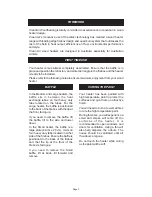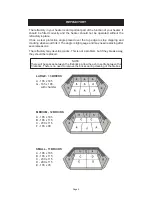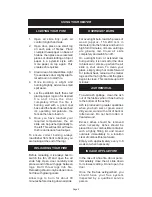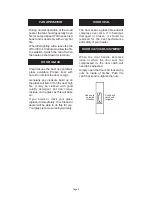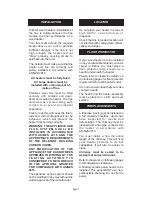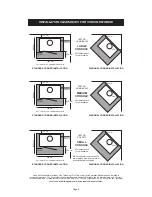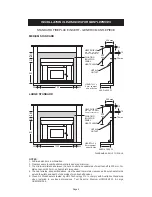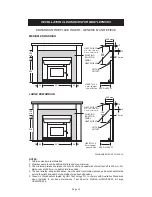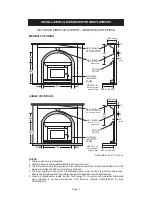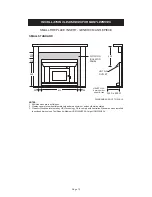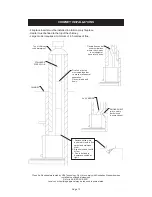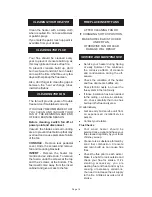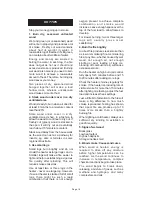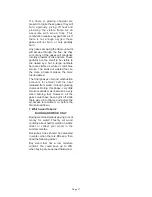
If a flame or glowing charcoal are
present to ignite these gases, they will
burn vigorously, giving off heat and
providing the visible flame we all
associate with wood fires. This
combustion requires oxygen from air. If
there is not enough oxygen, these
gases will not burn, or only partially
burn.
Any gases escaping the flame unburnt
will escape through the flue. As they
cool, many of the gases will condense
into tiny droplets of oils and tars. These
particles are too small to be visible to
the naked eye, but in large numbers
become visible as white or faint blue
smoke. The smoke is wasted fuel, so
the more a heater smokes, the more
fuel is wasted.
The final phases of wood combustion
accounts for almost half the heat
released from wood - through glowing
charcoal. During this phase, very little
smoke is emitted, as charcoal is a very
clean burning fuel. However, all the
gases must have been burnt off while
there was a lot of flame and before the
air access is restricted, i.e. before the
fire is turned down.
7. Which wood to burn?
BURN HARDWOOD ONLY
Buying wet wood means paying a lot of
money for water
! Freshly cut wood
contains about half its weight in water.
Order or collect your wood in the
summer months.
Deciduous trees should be harvested
in winter, when there is little sap, then
dried the following winter.
Buy wood that has a low moisture
content. You could save up to 40%
when buying dry, seasoned hardwood.
Page 17
Summary of Contents for Edwardian Large
Page 18: ...BUILDERS NOTES Page 18 ...

